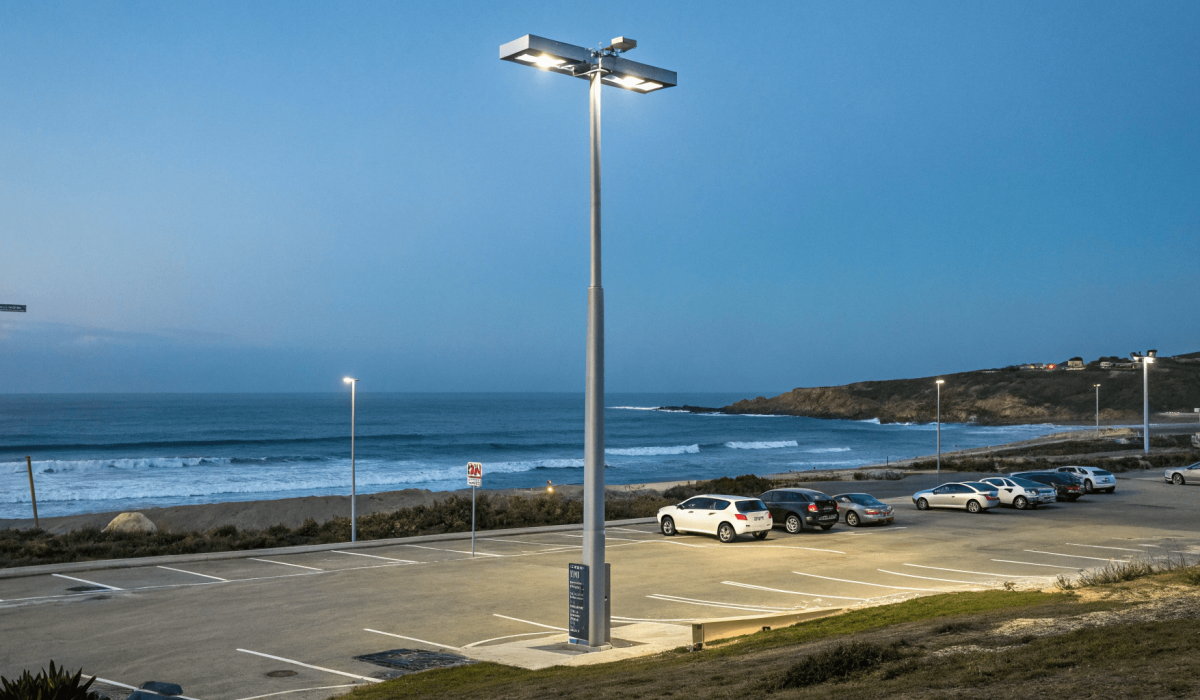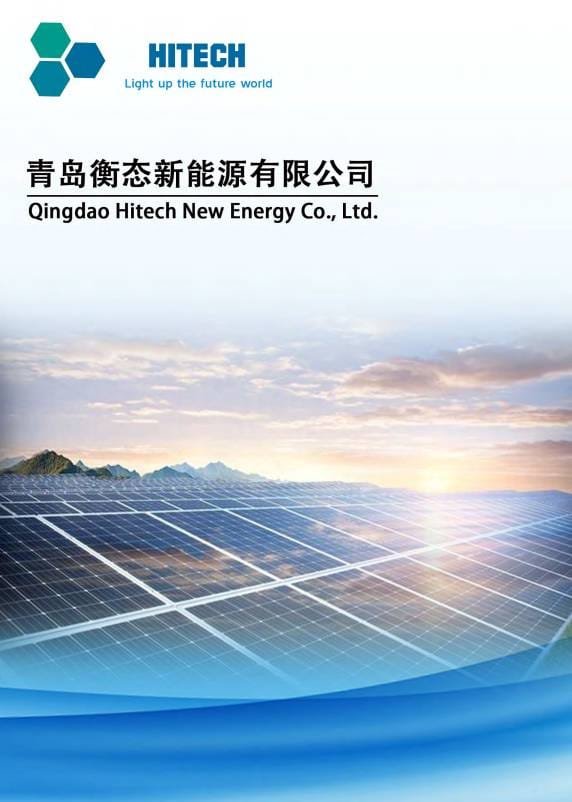Selecting the right light pole for sports fields, parking lots, ports, or freight terminals is crucial to ensure safety, durability, and compliance with wind resistance standards.
✅ Key Considerations for Selecting a Light Pole:
- Wind resistance: Poles must withstand high wind speeds in coastal or open areas.
- Load-bearing capacity: The pole must support multiple luminaires, brackets, and accessories.
- Material choice: Steel vs. aluminum for strength, durability, and corrosion resistance.
- Compliance with local codes: Ensures safety and prevents structural failures.
Wind Load & Structural Considerations for Light Poles
Why Wind Speed Matters for Light Poles
- Wind speed zones vary by location. Poles must be rated for site-specific wind speeds.
- Wind speed maps help determine regional wind load requirements.
- If a site falls near a high-wind zone, a higher wind rating should be assumed for added safety.
How Wind Load Impacts Light Poles
- Wind load = Force exerted by wind on the pole, fixtures, and accessories.
- If not properly designed, wind load can cause pole swaying, vibrations, or failure.
- Coastal areas, mountainous regions, and open landscapes require poles with higher wind resistance.
✅ How to Mitigate Wind Load Risks:
✔ Use tapered/conical pole designs to reduce wind resistance.
✔ Select heavier-duty poles with reinforced anchorage.
✔ Use guy wires or support systems for extra stability.

Effective Projected Area (EPA) & Load Capacity
What is EPA (Effective Projected Area)?
- EPA = The total surface area of fixtures and brackets exposed to wind.
- The higher the EPA, the greater the wind resistance needed in pole selection.
Calculating Total EPA for a Light Pole
✅ Total EPA = (EPA of luminaire × number of fixtures) + (EPA of brackets and hardware × quantity of each piece)
- The higher the number of luminaires per pole, the greater the wind resistance needed.
- Light fixture mounting type (e.g., floodlights on brackets vs. direct-mounted area lights) affects wind resistance.
- Additional accessories (banners, overhead wires, signs) add to the total EPA load.
Choosing the Right Material: Steel vs. Aluminum Poles
Steel Light Poles: Maximum Strength & Load Capacity
✅ Best for high-wind areas and heavy loads.
✅ Can support multiple fixtures, banners, and brackets.
❌ Requires rust protection (galvanization or powder coating).
❌ Heavier and more expensive to transport & install.
Aluminum Light Poles: Corrosion-Resistant & Lightweight
✅ Naturally corrosion-resistant – Ideal for coastal & humid environments.
✅ Lower maintenance and easier installation.
❌ Lower wind resistance than steel – Not ideal for high wind loads.
❌ Limited anchorage options – Harder to match existing bolt patterns.
🏆 Best for Strength → Steel
🏆 Best for Corrosion Resistance & Longevity → Aluminum

Understanding Local Building Codes & Compliance
Why Building Codes Matter
- Local building codes define wind ratings and safety requirements for light poles.
- High-wind zones (coastal regions, mountain areas) require higher wind-rated poles.
- Failure to meet local codes may result in permit denials or unsafe installations.
How to Determine Your Site's Wind Speed Requirement
✅ Consult municipal building departments for site-specific wind speed ratings.
✅ Use wind speed maps to estimate required pole ratings.
✅ If unsure, choose a pole rated for a higher wind load to ensure compliance.
Is an Engineer Required for Light Pole Selection & Installation?
Do You Need an Engineer to Choose a Light Pole?
No, a lighting specialist or pole supplier can recommend the correct pole if the following factors are known:
✔ Wind speed of location
✔ Total EPA (fixtures + brackets + hardware)
✔ Weight of fixtures & mounting hardware
✔ Mounting height of luminaires
When is an Engineer Required?
✅ Permit approval & compliance – If required by local codes.
✅ Installation in high-wind areas – To determine appropriate base/foundation design.
✅ Custom structural calculations – If a project requires a customized pole and anchoring system.
💡 Tip: If an engineer is required, obtain stamped structural drawings for compliance.
Using Data to Select the Right Light Pole

Step-by-Step Process for Choosing a Light Pole:
✔ Step 1: Identify wind speed rating for the location.
✔ Step 2: Determine fixture type & quantity to calculate total EPA.
✔ Step 3: Add EPA of brackets, mounting arms, and accessories.
✔ Step 4: Select steel or aluminum based on wind load & environment.
✔ Step 5: Verify local building codes for wind and load compliance.
✔ Step 6: Choose proper anchorage & foundation based on soil conditions.
✔ Step 7: If necessary, consult an engineer for permit approval.
Conclusion: Ensuring a Safe & Efficient Light Pole Selection
✅ Choosing the right light pole involves:
- Understanding wind loads & wind maps to determine pole strength.
- Calculating total EPA (luminaire & bracket surface area).
- Selecting the correct material (steel for strength, aluminum for corrosion resistance).
- Ensuring compliance with building codes for safety.
- Determining installation requirements (engineer assistance for high-risk zones).


